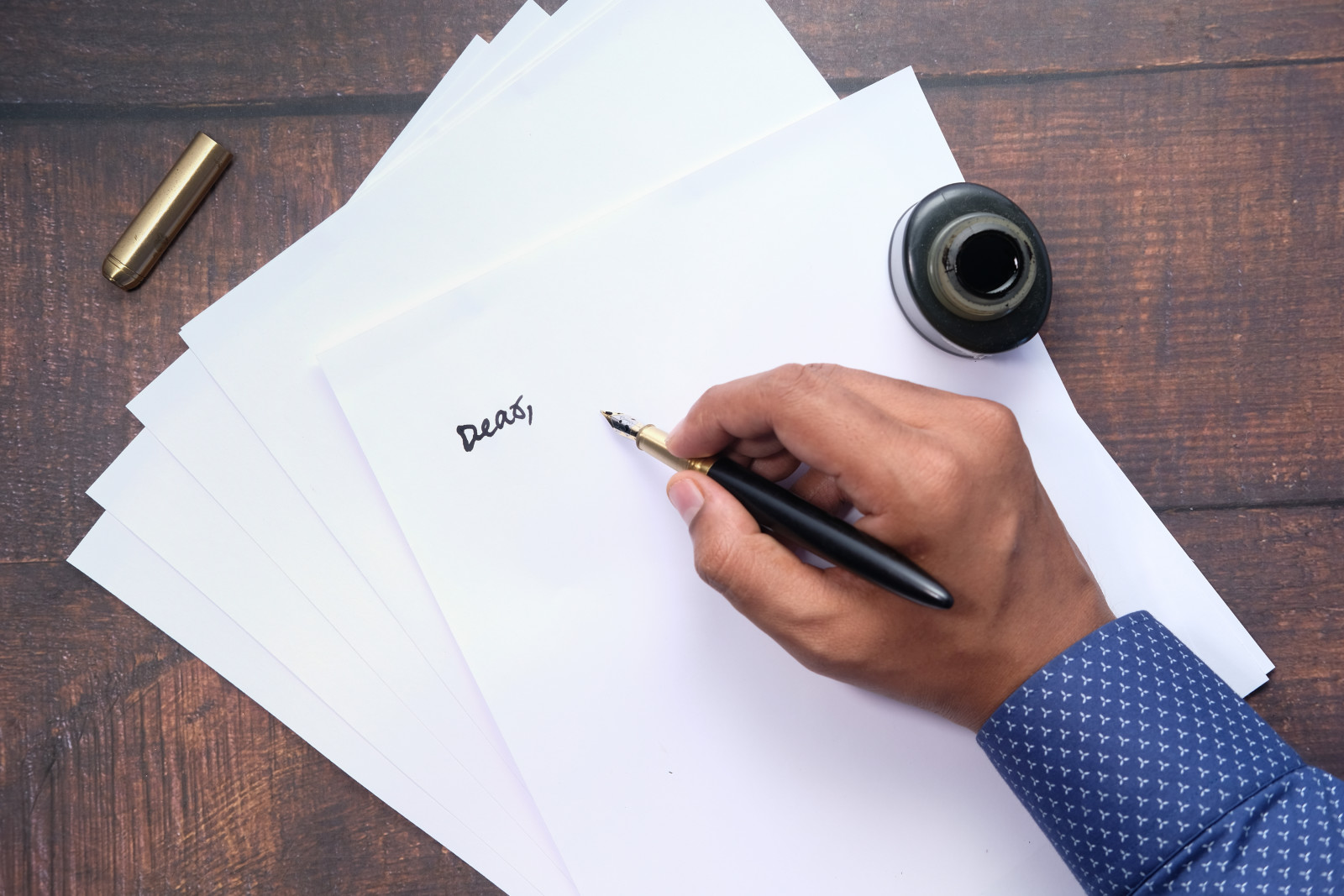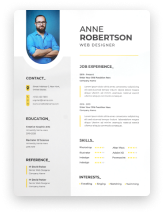Diving into the world of pharmacy can be as intricate as the compounds pharmacists deal with daily. Whether you're a seasoned pharmacist or a fresh graduate stepping into the field, crafting a resume that encapsulates your expertise, dedication, and the nuanced skills required in the healthcare sector is paramount. In this guide, we'll walk you through everything you need to know about penning a compelling resume tailored for the dynamic and vital role of a pharmacist. From highlighting your pharmaceutical knowledge to showcasing your ability to manage and guide healthcare teams, we'll provide you with actionable insights to create a resume that not only ticks all the boxes for potential employers but also sets you apart in the competitive landscape of medicine, healthcare, and wellbeing.

Pharmacist Resume: A Real-World Example
Elena Martinez, Pharm.D. Los Angeles, CA
(555) 123-4567 | elena.martinez@example.com
LinkedIn: linkedin.com/in/elenamartinezpharmd
Professional Summary
Highly skilled and empathetic Pharmacist with over 8 years of experience in fast-paced hospital and retail pharmacy settings. Proven ability in medication therapy management, patient counseling, and in leading pharmacy operations to enhance patient care. Adept at working closely with healthcare professionals to develop and implement effective treatment plans. Committed to continuous learning and advancing pharmacy practices.
Professional Experience
Senior Pharmacist St. John's Medical Center
Los Angeles, CA | April 2018 -- Present
-
Lead a team of 10 pharmacy technicians and interns, fostering an environment of learning and professional growth.
-
Implemented a medication management system, reducing medication errors by 25%.
-
Spearheaded the transition to a digital record-keeping system, enhancing the efficiency of medication tracking and inventory management.
-
Conducted weekly training sessions for pharmacy staff on new medication therapies and technology advancements.
Pharmacist CVS Pharmacy
Los Angeles, CA | June 2015 -- March 2018
-
Provided exceptional patient care, including medication counseling, immunizations, and health screenings.
-
Managed medication inventory, ensuring availability and compliance with regulations.
-
Collaborated with healthcare providers to optimize medication regimens for patients with complex chronic conditions.
-
Increased customer satisfaction scores by 20% through personalized patient care and follow-up.
Pharmacy Intern Walgreens
San Diego, CA | September 2013 -- May 2015
-
Assisted in the dispensing of medications and provided patient counseling under the supervision of a licensed pharmacist.
-
Participated in the management of the pharmacy's inventory, including ordering, stocking, and record-keeping.
-
Engaged in community health events, providing education on medication safety and chronic disease management.
Education
Doctor of Pharmacy (Pharm.D.)
University of Southern California, Los Angeles, CA | May 2013
Certifications
-
Licensed Pharmacist, California State Board of Pharmacy
-
Certified Immunization Pharmacist
-
Medication Therapy Management Certification
Professional Affiliations
-
American Pharmacists Association (APhA)
-
California Pharmacists Association (CPhA)
Skills
-
Medication Therapy Management
-
Patient Counseling
-
Pharmacy Operations Management
-
Leadership and Team Building
-
Health Informatics
Crafting Your Pharmacist Resume: Structure and Format Essentials
Crafting a resume that stands out in the competitive field of pharmacy requires a strategic approach to both content and layout. Here are the core elements to consider when organizing your pharmacist resume:
Prioritize Clarity and Professionalism
Your resume should embody a balance of aesthetic appeal and readability. Opt for a clean, professional format with ample white space, bullet points for easy scanning, and a consistent font throughout. Typically, a font size between 10 to 12 points in a professional font style like Arial, Calibri, or Times New Roman is recommended.
Logical Section Order
A well-structured resume typically follows this order:
-
Contact Information: Clearly list your name, phone number, email, and LinkedIn profile if applicable.
-
Professional Summary or Objective: Offer a concise snapshot of your qualifications and career goals.
-
Work Experience: Detail your professional history in reverse chronological order, highlighting relevant responsibilities and achievements.
-
Education: Include your highest degree, institution name, and graduation year. If you're a recent graduate, place this section before your work experience.
-
Certifications and Licenses: Especially crucial for a pharmacist, list any relevant certifications that enhance your credibility.
-
Skills: Highlight both hard and soft skills pertinent to pharmacy roles.
-
Additional Sections: Consider including volunteer work, publications, or professional affiliations that can bolster your candidacy.
Emphasize Achievements Over Tasks
Rather than merely listing your job duties, focus on your accomplishments in each role. Use numbers and specific outcomes to demonstrate your impact.
Tailoring Your Resume
Customize your resume for each job application. Use keywords from the job description to make your resume more ATS-friendly and to show that your experience aligns with the role you're applying for.
Use of Bullet Points
Employ bullet points to break up text and make your achievements more digestible. Start each point with a powerful action verb to capture attention.
Keeping It Concise
While it's tempting to include every detail of your professional journey, it's crucial to keep your resume concise. Aim for one to two pages, focusing on the most relevant and recent experiences.
A pharmacist's resume needs to convey a blend of technical proficiency, patient-focused care, and operational efficiency. By carefully structuring your resume, you can effectively showcase your qualifications and stand out in the healthcare field.
Perfecting Your Pharmacist Resume Summary or Objective
A compelling resume summary or objective is crucial for capturing the attention of hiring managers. This brief section sits at the top of your resume and serves as your professional elevator pitch.
Crafting a Captivating Summary
A resume summary is ideal for pharmacists with a wealth of experience. It should succinctly highlight your years of experience, key skills, and major achievements.
"Detail-oriented Pharmacist with over 10 years of experience in both retail and clinical settings. Expert in pharmacological information, patient counseling, and medication therapy management. Proven track record of improving patient medication adherence by 30% through personalized care plans."
Writing a Focused Objective
For those new to the field or looking to make a career shift, a resume objective can outline your career goals and how you plan to contribute to the prospective employer.
"Recent Pharm.D. graduate eager to apply extensive knowledge of pharmacology and patient care in a clinical pharmacy setting. Committed to leveraging skills in medication therapy management and patient education to support healthcare teams and enhance patient outcomes."
Tips for Making Your Summary or Objective Stand Out
-
Be Specific: Tailor your summary or objective to the pharmacist role you're applying for, incorporating keywords from the job description.
-
Show Value: Highlight how you can add value to the employer, focusing on your unique skills or accomplishments.
-
Keep It Concise: Limit this section to 3-4 sentences, making every word count.
Highlighting Work Experience on Your Pharmacist Resume
Your work experience section is the cornerstone of your resume, showcasing your professional journey and achievements. Here's how to effectively present your work experience as a pharmacist:
Structuring Your Experience
List your work experience in reverse chronological order, starting with your most recent position. For each role, include the job title, employer name, location, and dates of employment. Under each position, use bullet points to detail your responsibilities and accomplishments.
Quantifying Achievements
Whenever possible, quantify your achievements with data and statistics. For instance, instead of saying "Managed medication inventory," you could say "Oversaw a medication inventory worth over $500,000, ensuring a 98% accuracy rate in stock management and replenishment."
Demonstrating Impact
Focus on how your work positively impacted the pharmacy or patient care. Mention any initiatives you led or participated in that improved processes, enhanced patient satisfaction, or increased efficiency.
Tailoring Your Experience
Highlight experiences and skills that are most relevant to the job you're applying for. Use keywords from the job description to make your resume more ATS-friendly and to demonstrate your suitability for the role.
Examples of Work Experience Bullet Points
- "Collaborated with healthcare teams to develop and implement patient-centered medication therapy management plans, resulting in a 25% improvement in medication adherence among chronic disease patients."
By effectively articulating your work experience, you demonstrate to potential employers your capability to contribute meaningfully to their pharmacy team, highlighting your technical skills, leadership abilities, and commitment to patient care.
Education Section: Showcasing Your Pharmacist Credentials
The education section of your pharmacist resume is more than just a list of degrees; it's an opportunity to highlight your foundational knowledge and specialized training. Here's how to effectively present your educational background:
Essential Information to Include
-
Degree and Major: Start with your highest degree relevant to pharmacy. For most pharmacists, this will be a Doctor of Pharmacy (Pharm.D.) degree.
-
University or College: Include the name of the institution from which you graduated.
-
Graduation Date: Mention the month and year of your graduation, especially if you've recently completed your degree.
-
Licenses and Certifications: While these can also be listed in a separate section, it's crucial to mention your pharmacist license here, along with any additional certifications that enhance your qualifications, such as immunization delivery or medication therapy management.
Highlighting Your Achievements
If you graduated with honors, or were involved in relevant extracurriculars or professional organizations, mention these as well. This could include leadership positions in student chapters of pharmacy associations, participation in research projects, or any awards received during your academic career.
Example of an Education Section
Doctor of Pharmacy (Pharm.D.)
University of California, San Francisco | May 2020 Cum Laude
License:
- Registered Pharmacist, California Board of Pharmacy
Certifications:
- Certified Immunization Pharmacist, Medication Therapy Management Certification
Continuing Education
If you've completed post-graduate training or continuing education courses relevant to pharmacy, such as a residency or a certification in a specialty area, include these details. This shows a commitment to ongoing professional development.
The education section of your resume is a testament to your commitment to the profession and provides a foundation for your expertise in pharmacy. Make sure it clearly conveys your qualifications and readiness to excel in the role you're applying for.
Essential Skills for a Pharmacist Resume
The skills section of your pharmacist resume is your chance to showcase the specific abilities that make you the right candidate for the job. Here's how to highlight your skills effectively:
Technical Skills
-
Medication Therapy Management (MTM): Demonstrate your expertise in optimizing medication use and improving patient outcomes.
-
Pharmacology Knowledge: Show your deep understanding of drug composition, properties, interactions, and mechanisms of action.
-
Pharmacy Information Systems: Highlight your proficiency with digital tools and technologies used in pharmacy operations.
Soft Skills
-
Communication: Emphasize your ability to communicate complex medical information clearly to patients and healthcare professionals.
-
Attention to Detail: Detail your meticulous approach to dispensing medications, managing inventory, and adhering to regulatory compliance.
-
Problem-Solving: Showcase your ability to address and resolve medication-related issues or patient concerns effectively.
Tailoring Your Skills Section
Customize your skills list to match the job description. Identify the skills most frequently mentioned and ensure they are prominently featured on your resume if you possess them.
Example Skills for a Pharmacist Resume
-
Skilled in the use of pharmacy management software and electronic health records
-
Excellent interpersonal and communication skills, with a focus on patient education
-
Strong analytical skills for assessing prescription accuracy and potential drug interactions
-
Proficient in leading and training pharmacy staff to achieve operational excellence
Your skills section should provide a snapshot of your capabilities that resonate with the needs of the employer. By carefully selecting and presenting your skills, you can position yourself as a well-rounded candidate ready to make a significant impact in the pharmacy field.
Enhancing Your Pharmacist Resume with Additional Sections
To stand out in the competitive field of pharmacy, consider adding sections to your resume that highlight your unique experiences and achievements. These can provide a more comprehensive view of your qualifications and interests.
Certifications and Licenses
Essential for pharmacists, this section should detail your pharmacy license and any additional certifications you hold,
-
Certified Immunization Pharmacist (CIP)
-
Board Certified Pharmacotherapy Specialist (BCPS)
-
Certification in Medication Therapy Management
Professional Affiliations
Membership in professional organizations demonstrates your commitment to the field and can be particularly appealing to employers. Include any active roles or contributions,
-
American Pharmacists Association (APhA)
-
American Society of Health-System Pharmacists (ASHP)
Volunteer Experience
If you have volunteered in healthcare-related roles or community service that showcases your leadership, teamwork, or communication skills, include this information.
-
Volunteering at local health fairs to provide medication counseling
-
Participating in drug take-back programs or community health initiatives
Publications and Presentations
If you've contributed to research projects, published articles in pharmacy journals, or presented at industry conferences, listing these accomplishments can set you apart as a candidate who is engaged with the broader professional community.
Personal Projects or Interests
While not always directly related to the job, personal projects or interests can round out your resume, showing aspects of your personality and work ethic. For example, running a blog on pharmaceutical trends or participating in marathons can reflect your dedication and discipline.
Example of an Additional Section
Certifications:
-
Board Certified Pharmacotherapy Specialist (BCPS), 2021
-
Certified Diabetes Educator (CDE), 2020
Professional Affiliations:
-
Member, American Pharmacists Association (APhA) since 2018
-
Volunteer, Pharmacy Outreach Program, providing free health screenings and medication reviews in underserved communities
Adding these sections to your pharmacist resume can highlight your breadth of experience, commitment to professional development, and personal character, making you a more attractive candidate to potential employers.
Crafting the Perfect Cover Letter for Your Pharmacist Resume
A well-crafted cover letter is your opportunity to provide a narrative about your professional journey, highlight your achievements, and explain how you align with the specific needs of the employer. Here's how to write a compelling cover letter for a pharmacist position:
Opening Paragraph
Begin with a strong introduction that captures the hiring manager's attention. Mention the position you're applying for and express your enthusiasm for the opportunity.
"I am writing to express my interest in the Senior Pharmacist position at XYZ Healthcare, as advertised on your careers page. With over 10 years of experience in both retail and clinical pharmacy settings, I am excited about the opportunity to contribute to your team."
Body Paragraphs
This section should detail your relevant experiences, skills, and accomplishments. Use specific examples to demonstrate how you've applied your expertise to benefit previous employers or patients. Highlight any initiatives you've led, challenges you've overcome, or contributions to patient care or pharmacy operations.
Closing Paragraph
Conclude by reiterating your interest in the position and the value you would bring to the team. Offer a polite invitation to discuss your application in further detail and thank the reader for their consideration.
"I am eager to bring my expertise in medication therapy management and patient-centered care to XYZ Healthcare. I look forward to the opportunity to discuss how my background, skills, and passions align with the goals of your pharmacy team. Thank you for considering my application."
Tips for a Successful Cover Letter
-
Customize Your Letter: Tailor your cover letter to the job and company, mentioning specific aspects of the job description or company culture that attract you.
-
Keep It Concise: Aim for a length of one page, focusing on your most relevant experiences and achievements.
-
Professional Tone: Maintain a professional tone throughout your letter, but don't be afraid to let your personality and passion for pharmacy come through.
-
Proofread: Carefully proofread your cover letter to ensure it's free of typos and grammatical errors.
Your cover letter is a chance to make a memorable impression and argue your case for why you're the best candidate for the job. Take the time to craft a thoughtful and personalized letter that showcases your qualifications and enthusiasm for the position.

Key Takeaways for Crafting Your Pharmacist Resume
In crafting your pharmacist resume, remember the importance of tailoring your document to highlight the unique skills, experiences, and qualifications that make you the ideal candidate for the position. Here are the key points to keep in mind:
-
Tailor Your Resume: Customize your resume for each job application, emphasizing the skills and experiences most relevant to the job description.
-
Highlight Achievements: Use quantifiable achievements to demonstrate your impact in previous roles, such as improving medication adherence rates or enhancing pharmacy operations.
-
Focus on Relevant Experience: Prioritize your most relevant work experiences, and detail your responsibilities and accomplishments in those roles.
-
Showcase Your Education and Certifications: Clearly list your Pharm.D. degree, state licensure, and any additional certifications that are pertinent to the role you're applying for.
-
Detail Your Skills: Include both technical and soft skills that are essential for a pharmacist, highlighting your expertise in medication therapy management, patient counseling, and pharmacy technology.
-
Include Additional Sections: Consider adding sections for certifications, professional affiliations, volunteer experience, or publications to provide a fuller picture of your qualifications and interests.
-
Write a Compelling Cover Letter: Accompany your resume with a personalized cover letter that elaborates on your experiences and expresses your enthusiasm for the position.
Remember, your resume and cover letter are your opportunities to make a strong first impression on potential employers. By following these guidelines and tailoring your application to reflect the specific requirements and culture of the organization, you'll be well-positioned to land the pharmacist role you're aiming for.
Frequently Asked Questions About Writing a Pharmacist Resume
How Long Should My Pharmacist Resume Be?
Your pharmacist resume should ideally be one to two pages long, depending on your experience level. Focus on the most relevant experiences and accomplishments to keep it concise.
Should I Include a References Section on My Pharmacist Resume?
It's generally not necessary to include a references section on your resume. Employers will request references if they are needed during the hiring process. Instead, use the space to expand on your skills and experiences.
How Can I Make My Resume Stand Out?
To make your resume stand out:
-
Use specific, quantifiable achievements to demonstrate your impact.
-
Tailor your resume to each job application, highlighting the skills and experiences most relevant to the job description.
-
Include additional sections that showcase your certifications, professional affiliations, or volunteer experiences.
What Skills Are Most Important for a Pharmacist?
Important skills for a pharmacist include medication therapy management, patient counseling, knowledge of pharmacology, attention to detail, communication skills, and proficiency with pharmacy information systems.
How Do I Address Career Gaps on My Resume?
If you have career gaps, focus on what you did during those times that could be relevant to your career as a pharmacist. This could include further education, volunteer work, or relevant personal projects. Be prepared to discuss these gaps in an interview in a positive light, focusing on growth and learning.
Can I Include Part-Time or Volunteer Work on My Resume?
Yes, part-time and volunteer work can be included, especially if they demonstrate skills or experiences relevant to the pharmacist role you are applying for. This can also be a good way to fill in career gaps.
How Important Is the Cover Letter?
The cover letter is very important as it gives you the opportunity to explain in more detail how your skills and experiences make you the ideal candidate for the job. It also allows you to express your enthusiasm for the role and the company.
By addressing these common questions and following the tips provided throughout this guide, you'll be well-equipped to create a compelling pharmacist resume and cover letter that will help you stand out to potential employers.
Recommended Reading









